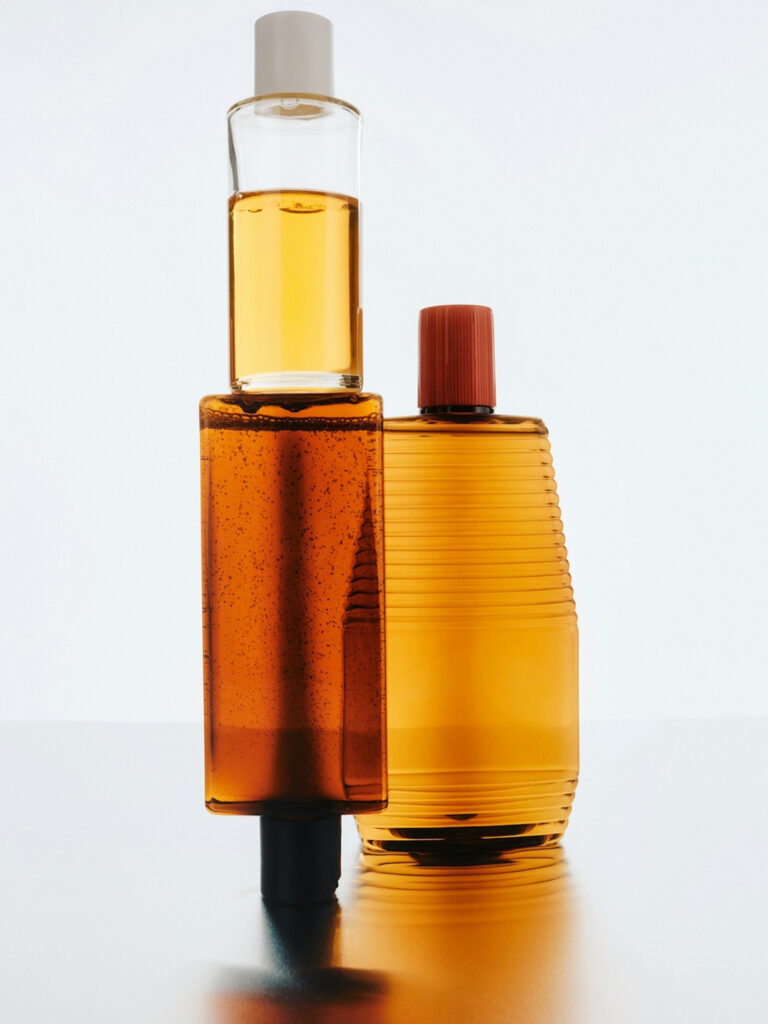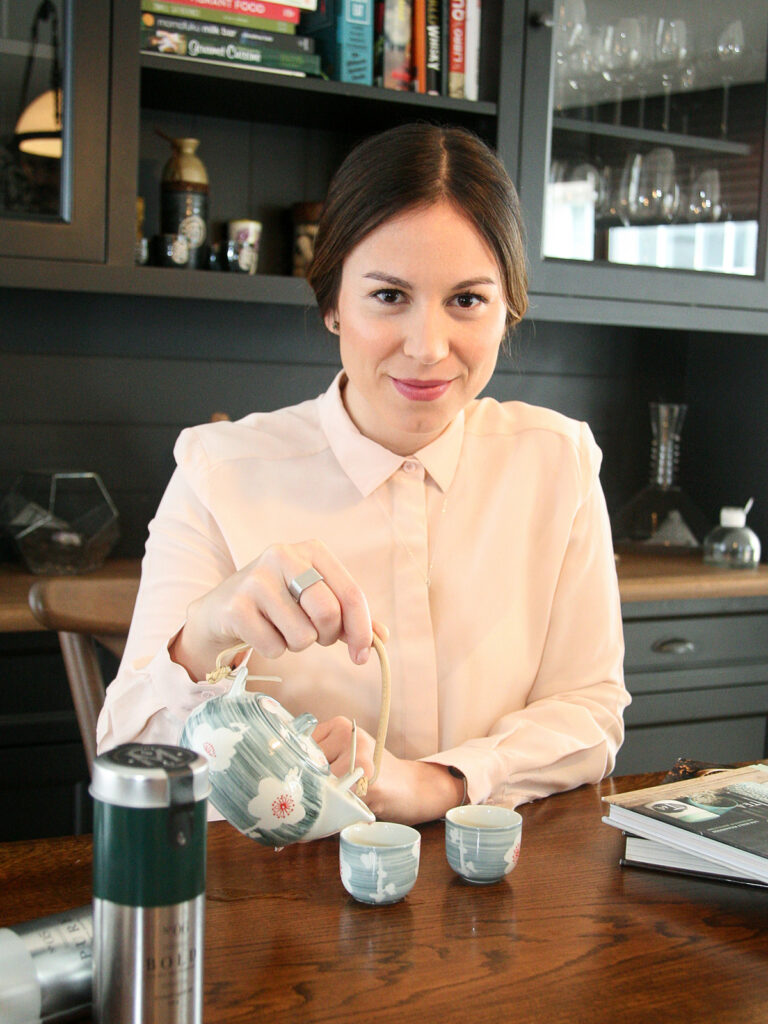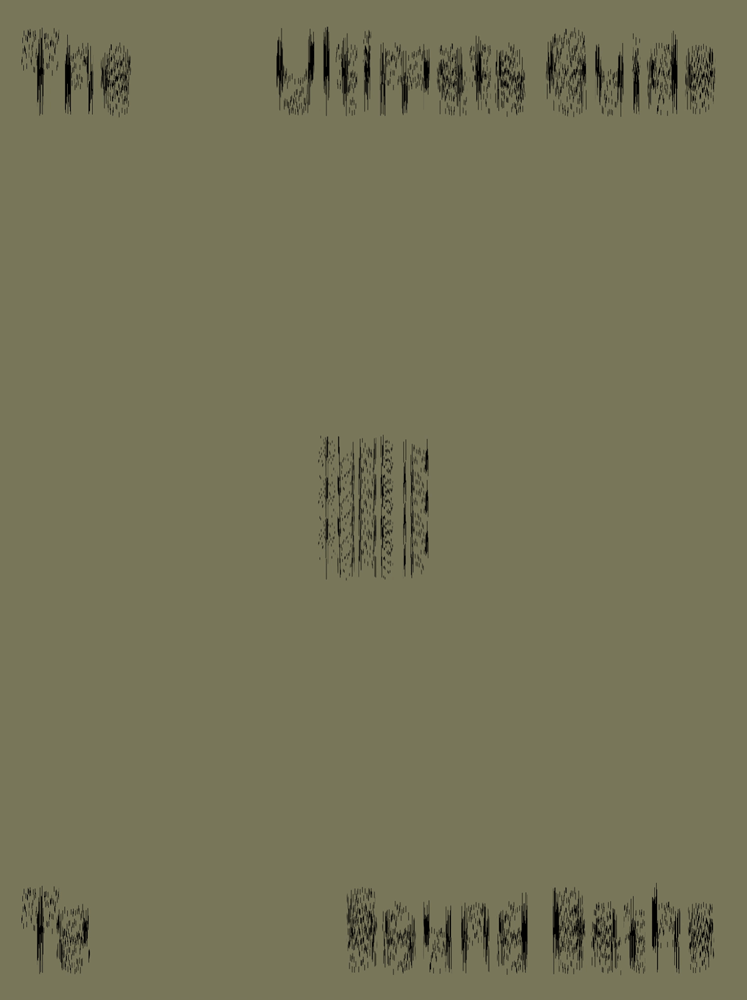
Stories
Tune In: The Ultimate Guide To Sound Baths
From crystal bowls and gongs to binaural beats and drums, the power of sound as a fast track to meditation and healing is evident in both ancient practices and recent scientific research. In short, it WORKS. Here is a comprehensive guide for all you need to know.
Text Defne Sarıçetin
The human connection to sound predates gigs and headphones. While the practice goes as far back as since we have been gathering around fires, its more recent resurgence can be tied to new studies examining its benefits on mood, anxiety, pain, and well-being. Another reason might be our current collective state. A fast-paced and often anxiety-inducing world where we are constantly bombarded by news and notifications. Meaning: most of us are aware we desperately need to chill out and reconnect with ourselves which can frankly be a challenge. Sound baths – which don’t involve water, but simply lying down and immersing yourself in sound and vibrations created by various instruments – are becoming more available both in studios and online offerings for everyone to experience.
What is a Sound Bath?
A sound bath is a wellness practice where you sit or lie down, and the “bath” simply means being encompassed by sound. Using the sounds and vibrations from instruments which include crystal or brass singing bowls, chimes, gongs, tuning forks, didgeridoo, harps, shamanic drums, or even electronic sounds, a sound practitioner guides listeners into a deep state of relaxation and meditation.
Researchers even found sound baths to be more effective than regular meditation in silence. Many describe the experience as hitting a reset button, almost allowing their system to recalibrate to a quiet, clear, and peaceful mind. “The sound gives your mind this aim to focus on,” explains Stephanie Reynolds, a sound practitioner and co-founder of House of Wisdom studio in London. Using sound frequencies signals your brain into the kind of deep meditative state that can take people years and years of practice through normal meditation practice, she says “using sound can be a gateway. Kind of like quick access to experiencing these deep meditative states which can be beneficial for people who struggle with sitting in silence.”
Leading gong practitioner Leo Cosendai has famously said panic attacks were what brought him to sound bathing. Once too nervous to ride the train in rush hour, the sound took him to a place he claims he never reached with yoga. Following increasing research on sound healing and its effects on reducing anxiety and stress, Cosendai began working with scientists and turned from music to sound. “It can increase the immune response and helps increase dopamine and serotonin, which are our feel-good chemicals. What sound does extremely well is it makes meditation very accessible. It turns it into an experience. And everyone wants a bit of that right now.”
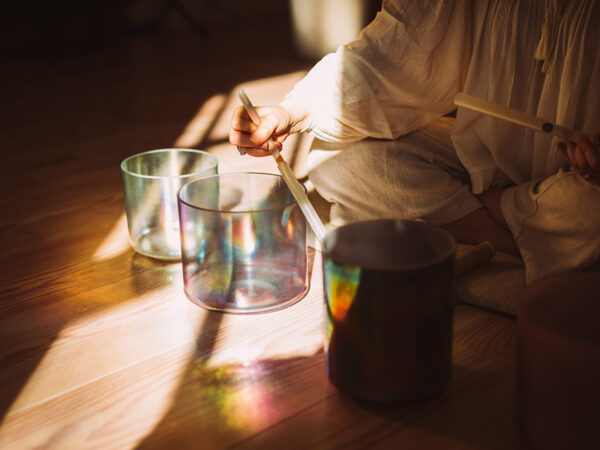
The most popular options are Tibetan singing bowls, crystal bowls made from crystal quartz which produce a very clear sound and a more gentle experience. And gong, which according to Re:Mind Studio in London, can promote deep meditation by allowing the brain to reach altered states — specifically the delta and theta brain wave states which are the slowest brain waves in humans.
From Tibet to Recent Research: The History, Science, and Benefits
Sound healing has been around for centuries from Ancient Egyptians’ incantations for healing the sick to Native Americans using singing, chanting, and drums. Ottoman and Greek physicians used music therapy to aid patients’ digestion and sleep and treat mental disturbance. By the end of the 19th century, music’s healing effects were more broadly studied, including findings such as lowering blood pressure and assisting the work of the parasympathetic nervous system which helps the body calm down and recover from stress.
Tamara Goldsby, a research psychologist at the University of California, says sound healing meditations (particularly those using Tibetan singing bowls, gongs, and quartz crystal bowls) can be extremely calming. Sound meditation seems to work in part by switching off the body’s fight-or-flight stress responses, according to Goldsby, “countering this stress response by invoking the parasympathetic nervous system which slows the heart rate and activates healing in the body.” For a 2017 study published in the Journal of Evidence-Based Complementary and Alternative Medicine, Goldsby and colleagues measured the effect of a one-hour sound bath on 62 participants. All the measurables, which included levels of tension, anger, anxiety, depression, pain, and other aspects of physical and emotional well-being, had improved significantly.
There is increasing research that certain sounds, particularly binaural beats created by playing two different sound frequencies at the same time, may shift brain activity into beneficial brain wave states. Lee Bartel, a professor emeritus at the University of Toronto’s Faculty of Music and Rehabilitation Sciences Institute, says different brain wave states are associated with different patterns of cognition or wakefulness. Delta activity in the range of 1 to 4 Hz is associated with sleep, theta activity in the range of 4 to 7 Hz is associated with relaxation and creative thinking, and beta activity in the range of 12 to 20 Hz is associated with complex problem-solving and concentration. The brain’s electrical activity is measured in hertz, just as sounds oscillate at different frequencies. Bartel points out that by driving the brain toward these different states, it’s possible that certain sound-based therapies can improve sleep, reduce anxiety and pain, sharpen focus, and promote memory among other benefits.
Who Can Try a Sound Bath?
Sound baths are suitable for most people. Unless you are pregnant, struggling with PTSD, or something quite triggering, it is open to everybody. However, before experiencing any wellness practice; make sure to consult with trained practitioners and be upfront about any physical conditions or mental health struggles. We advise talking to certified professionals and getting the best advice and guidance for your safety and well-being.
Stephanie adds that at House of Wisdom studio, they are trying to facilitate a sense of community, support, and sharing, as well as a safe space for wellness practices. “I always make sure the clients know we aren’t psychiatrists or doctors, so if there is something that’s affecting them, they should reach out to medical professionals and share that with them. But if it’s just a friendly conversation or anything regarding the sound bath experience, then we are here to support everybody.” She suggests coming to sound especially if you are feeling quite stressed and wired, looking for something to get you out of that state and find a state of relaxation.
Wondertip: It is crucial to experience any session with professionals where the staff is equipped to support you. When our nervous system relaxes, there can be a release of emotions, and you must be surrounded by capable practitioners who can help you navigate it and make you feel comfortable and safe. Pick tried places where you can have a conversation or more explanation before and after if you are nervous. At Wonderflaw, we can suggest Re:Mind Studio and House of Wisdom in London, and Soundala Therapy in Istanbul.
The Experience
Every experience is individual, but most people report a sense of peace afterward. For many practitioners, sound baths began as a way to deepen their yoga or meditation practices. For Stephanie, it’s essentially just like being in another world. “Being in this lucid dream in-between state, I’ve never experienced that in anything. Having no concept of time and space, but also being so present and so alert and so unaware,” she laughs. “It’s hard to explain it in words, this dichotomy of what it is you’re experiencing. It just gave me this sense of peace and harmony that I didn’t know where to get from, this blissful state.”
Bella Ava, a sound healer, yoga teacher, and Reiki master says she had an out-of-body experience upon trying a session with alchemy singing bowls. “I witnessed the beauty of it all, taking it all in. I experienced beautiful moments of clarity, and huge shifts in the way I related to the painful experiences I was processing at the time. At the end of the session, I felt a tangible shift in my body. A deep sense of calmness was resonating throughout my entire being. I felt peaceful, grounded, and so much lighter.”
Sound artist and meditation practitioner Hana El Rais remembers her first sound experience as a little girl, witnessing her grandmother playing the drums and singing to her in a ceremony, feeling her heart expand with every beat of the drum. “My practice is working with the heart, so I like to encourage people to welcome in all spectrums of emotions and start connecting to our inner stillness and wisdom to bring you back into alignment and harmony with yourself.” Jaha Browne, Reiki master, and sound meditation guide recall feeling as though time expanded during her first sound bath, “it felt like a massive warm hug, like being cocooned.”
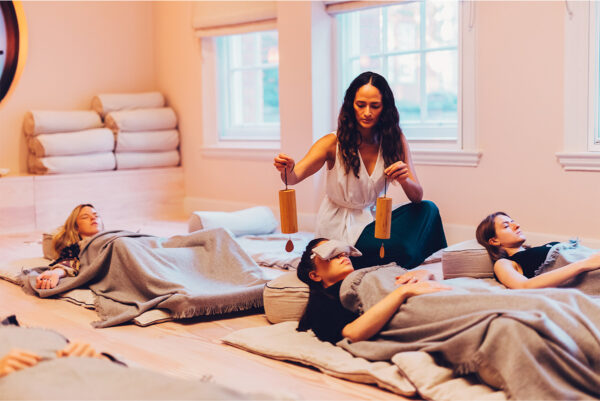
The How-To
The Prep: Watch sound baths on YouTube to familiarise yourself with the experience beforehand. Find a good studio and talk to them. Start with something gentle such as crystal bowls rather than a more intense gong experience. Do not come to the studio with a big cup of coffee; then try to lie down and relax. This means no stimulants like caffeine, especially if you feel anxious or wired. Try and get there early so you do not rush into the space. Give yourself the time to chill out. Wear comfy clothing, including a warm jumper as you get more chilly when you’re motionless.
The Bath: Everybody gets into the room and the practitioner usually gives guidance about what is going to happen during a session. More information about how the session is going to work can help you relax and understand you’re not going in blind. Try to relax and not have any specific expectations.
The Aprés: Aftercare is key. Once the session is finished, it’s a good idea to give yourself a few minutes (if not 15) to ground before you leave the studio space. Always take as much time as you need to calm down and come back into your body because as well as being quite an emotive experience, you can feel kind of in your head and space out afterward. Don’t rush out into the street or jump onto public transport immediately. Drink plenty of water afterward and stay well-hydrated. Practitioners advise staying at home and having some downtime alone rather than going out or consuming alcohol. Having a nice hot bath or shower and journaling can also help to release some feelings and intrusive thoughts.
Wondertip: For people who feel quite spaced out afterward like me, (I walked for an hour without headphones, just floating around in Hyde Park) Stephanie suggests having some tea and something sweet like dried fruit before leaving. Massaging your arms and legs and stomping your feet can also help to bring you back into your senses.
Incorporating Sound Beyond the Studio
While you may not receive the same resonance and physical vibrations as you would in a live session, you can still experience some benefits or check out the experience by listening online at home or en route. Stephanie cites applications like Third Ear (by gong practitioner Leo Casendai) and Meya, which bridges the gap between house and dance perspective with meditation, as her favorites.
An album to have on your playlist is Music for Psychedelic Therapy by Jon Hopkins — the electronic musician who’s previously worked with Brian Eno and released generative meditation tracks due to his lifelong interest in accessing alternative states through music, yoga, and meditation. Hopkins believes there’s been a decline in general mental health and a yearning to live differently following the pandemic. In his opinion, “looking inside ourselves is where we find the answer.”
If you’d like to bring the power of sound home, always listen with a good quality pair of headphones and create an ambiance for yourself. Include soothing essential oils such as lavender and have your phone on silent to create that connection with yourself without distractions or noises.
Ultimately, there are plenty of free resources on YouTube, Spotify, and SoundCloud. You can search particular frequencies for sleep or focus, like binaural beats, solfeggio frequencies, meditations, and sound bath recordings. As long as you are being safe; doing your research and experiencing people from professional bodies according to your unique makeup and needs, there is so much to explore. We are learning a lot more with recent research on the power of our senses and various more holistic ways of supporting ourselves.


